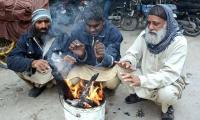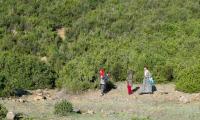The message from Prime Minister Imran Khan’s visit to China is loud and clear: “no plans to scale back CPEC”; a promise to ‘provide necessary assistance to Pakistan’ to tide over its financial troubles; ‘but more talks needed’, as per the Chinese vice foreign minister. Clearing the confusion over CPEC, Chinese Foreign Minister Wang Yi cautioned officials on both sides to be ‘careful about matters of significance’.
Analysts in Beijing have observed that CPEC’s ‘new growth points’, believed to have been proposed by Prime Minister Imran Khan, are expected to further boost long-term economic ties between China and Pakistan. Setting all speculations and controversial statements by the ministers in the new government to rest, the official communiqué reaffirmed their “complete consensus on the future trajectory of CPEC, timely completion of its on-going projects and joint efforts for realisation of its full potential with a focus on social development, job creation and livelihoods and accelerating cooperation in industrial development, industrial parks and agriculture”.
In line with the Treaty of Friendship, Cooperation and Good-neighbourly Relations between the People’s Republic of China and the Islamic Republic of Pakistan, signed by the Sharif government in 2015, the two sides have agreed to further build the “China-Pakistan community of shared future in the new era”.
So what’s so new about the PM’s visit? Historically, the Chinese are gracious if someone seeks guidance and support. Without any diplomatic constraints, Prime Minister Khan was quite eager in seeking guidance from the Chinese leadership and learning from China’s people-centred development model to alleviate poverty and eliminate corruption. But the prime minister, who ironically eulogises the Ayub model of concentration of wealth in a few hands and extreme social stratification, while forgetting his own populist paradigm against two Pakistan(s) – divided by an extreme gulf between the rich and the poor – should have known from whom he was asking what.
On their part, the Chinese were willing to share their experience of poverty alleviation, and have agreed to establish poverty alleviation demonstration projects, besides shifting their outdated labour-intensive industry. Despite having been embarrassed over the alleged corruption charges pertaining to CPEC projects undertaken during the previous government, the Chinese leadership have also agreed to share their iron-fist accountability drive that the PTI government is so keen on.
The Chinese model is a unique combination of ‘primary socialism’ mixed with a regulated market mechanism run by the Communist Party of China through a very elaborate centuries-old bureaucracy. The original mission of the Chinese communists remains to “seek happiness for the Chinese people and rejuvenation of the Chinese nation”. The ‘Chinese dream’ is based on the vivid memory of its ‘golden age’, on the advanced criteria of the Two Centenaries with an eye to become a leading global power by 2049. That would coincide with the 100th anniversary of the founding of the people’s republic.
Indeed, China is well on its way to take the centre-stage to ostensibly “build a (world) community with a shared future for mankind”, as was envisaged by Confucius as a “way of the just and harmonious” world in response to the chaos of his times. Rooted in immortal Chinese civilisation and helped by inherently contradictory ‘market-socialism’ with exceptional Chinese characteristics, China is set to achieve the goal of “building a moderately prosperous society” – in Marxist terms, of a “primary stage of socialism”.
Coinciding with the 100th anniversary of the Communist Party of China (CPC), the Asian giant is determined to become a “moderately well-off society” without relative poverty by the year 2021. China became the first nation in history to have achieved a GDP of $20 trillion in 2015. Now it leads the world in trade, outbound investments and reserves as the largest in the world on the Purchasing Power Parity terms of GDP.
Now this largest manufacturing-and-trading-house of the world, with the highest foreign exchange reserves, is ready to meet the requirements of its clients. Pakistan has already benefited from President Xi Jinping’s Belt and Road Initiative through its centrepiece project, the China-Pakistan Economic Corridor (CPEC). Energy and infrastructure projects worth $27 billion are now in the stage of completion before both sides agree on the blueprints of Special Economic Zones and other pivotal projects, such as the $2 billion worth Karachi Circular Railway and $8.2 billion worth Main-Line-1 of the Pakistan Railways.
The next CPEC JCC is expected to meet by the end of the year in Beijing to firm up the loose ends of the next phase of the Long-Term Plan, besides exploring the possibilities of a long PTI wish-list of populist projects, such as 10 million jobs and five million houses.
Beside adding 15 more MoUs to the hundreds signed earlier in every sphere, a working group has been formed on socio-economic development to assist livelihood projects. The most important development is the understanding to start the second phase of the China-Pakistan Free Trade Agreement to address the imbalance in trade that is heavily tilted in favour of China. The operationalisation of the currency-swap agreement and doubling of its volume will only be helpful if Pakistan earns more yuan through its increased exports to China. Speeding up the completion of the Gwadar Port and its auxiliary projects has also been agreed, depending upon feasibilities. No less important is the decision about trade and investment to boost industrial capacity as well as joint ventures in priority areas.
The reiteration that regional cooperation is crucial and that bilateral disputes among neighbours need to be resolved peacefully is also important. Both sides have underlined the significance of resumption of the Afghanistan-Pakistan-China dialogue at the foreign ministers’ level to be held in Kabul while implementing the Afghanistan-Pakistan Action Plan for Peace and Solidarity (APAPPS). China and Pakistan have also reiterated their resolve to end the “three evils” of religious extremism, separatism and terrorism, including the East Turkistan Islamic Movement (ETIM).
Pakistan’s relationship with China is graduating from a purely military strategic phase to much broader geo-economic spheres. We should be preparing to make it a real ‘game-changer’ in our best national interests. We need to learn from China’s development model and benefit from its advancements in various fields to stand on our own feet, instead of perpetuating our dependency on external handouts.
The Chinese have promised to help us out, but they don’t reward parasitic tendencies. They will wait for the outcome of our dialogue with the IMF and should be helping to fill remaining gaps and complement the Fund’s demand management with their supply side push. We should also not limit this promising partnership from the narrow prism of counter-balancing others in the region. Rather, we should engage all neighbours into the grand CPEC scheme as desired by the joint communiqué.
What was problematic during the previous government was that it was too obsessed with high-ticket infrastructure projects. And what is even more troublesome about this government is that it still doesn’t know exactly what its economic strategy will be. In fact, Pakistan lacks capacity and innovative thinking to set its own priorities to achieve self-reliance, sustainable growth and wriggle out of the double traps of dependency and the debt. It was Chinese experts who had developed the initial blueprint of CPEC as we failed to develop our own.
For a more fruitful cooperative relationship, Pakistan should be able to develop its own strategy that serves the goals of developing its own productive economic base, diversified and vibrant export sectors, pro-people sustainable growth, human resource development and self-reliance.
The writer is a senior journalist.
Email: imtiaz.safma@gmail.com
Twitter: @ImtiazAlamSAFMA
There are over 11 million Pakistanis settled abroad, out of which around six million work in Gulf and Middle East
This year alone, US Treasury would have to roll-over $10 to $14 trillion in maturing short-term debt
Tear gas no longer marks just protest sites; it paints entire cities as battlegrounds but then again, PTI did it first
Political structures and governance systems have been central to economic and social development
It is confirmed now 40 Pakistanis had died after boat of migrants had capsized in sea near Greece
Many people believe that in future, AI will play an even more significant role in their lives







